Fix: Exchange administrator has made a change that requires you to quit and restart Outlook
The Microsoft Exchange administrator has made a change that requires you quit and restart Outlook occurs because of the corrupted Email settings file, corrupted Office/Outlook installation, outdated Office/Outlook installation, non-compatible Office/Outlook Update and other Outlook profile related problems. This is a very common problem which users face either when they are logging in to Outlook or they encounter this error message while they are working.
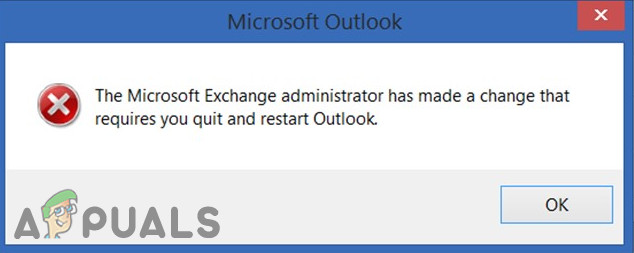
What causes the Time Limit for Logging on Was Reached Outlook Error?
- Corrupted Email Settings File: If your Microsoft Exchange Email account settingsare corrupt, then it can cause the current Outlook issue.
- Corrupted Office/Outlook Installation: If the Outlook installation itself isn’t complete and have some modules missing, then you will experience numerous problems like the current one under discussion.
- Outdated Office/Outlook: Microsoft updates Office/Outlook to keep it bug-free and to patch loopholes in it. If a user is using Outdated Office/Outlook installation, then he is prone to many problems including the current one.
- Non-Compatible Office/Outlook Update: If you have recently updated your Outlook version to its latest build and this update has compatibility issues with your version of Microsoft Exchange Server installation, it can cause in an unstable behaviour of Outlook.
- Corrupted Outlook Profile:Outlook has different profiles and if any of these profiles are not configured properly or have missing modules/corruption issues, you can encounter the current error message.
- Outlook Windows Local User Profile: Same is the case with Windows local user profile; your computer’s profile works closely with Outlook and there are some problems with it, they will reflect in Outlook as well.
Things to Consider Before Trying the Solutions:
Remember that this is a normal change if you just migrated to office365 or a new Exchange Server/database/mailbox. It usually prompts once and asks for the user credentials again. Enter the user credentials like “user@yourdomain.com” and then the user password and it should go. If it is repeating then follow the solution discussed below.
Also, use the problematic user’s credentials on another PC (preferably on the PC which is not showing the problem) and if the problem reappears then it is a server-side issue and you should contact your organization’s IT’s administrator.
Resolving ‘The Microsoft Exchange administrator has made a change that requires you quit and restart Outlook’
1: Repair the Exchange Email Account
This error message could be a result of corrupted Email account file. Using Outlook built-in repair tool to repair the account file may solve the problem.
- Start Outlook and then click on File.
- Now click on the Account Settings and in the list displayed, click on Account Settings.
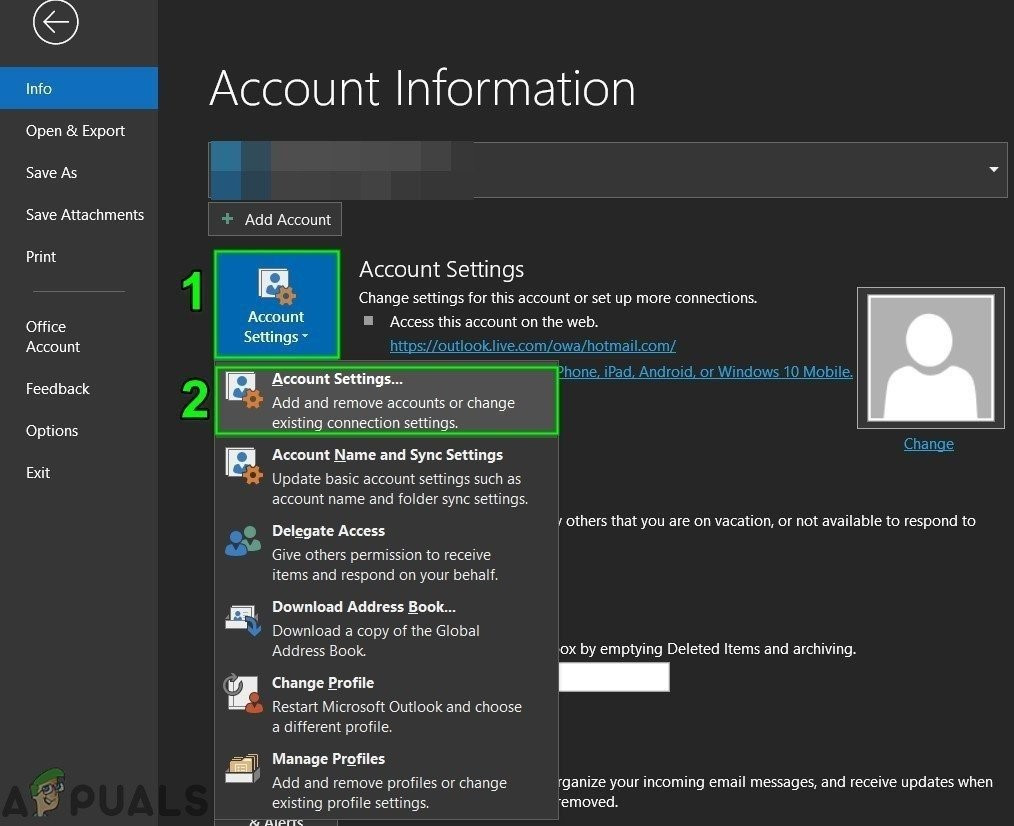
Open Outlook Account Settings - Now select the Exchange email account and then click Repair.
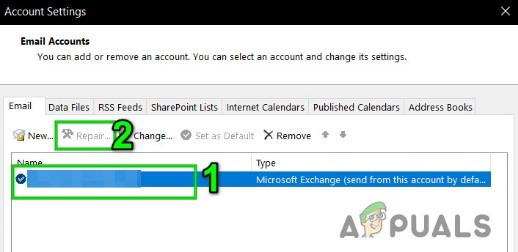
Repair Microsoft Exchange Account - Then in the Repair Account dialog box, click next.
- After completion of repairing, restart Outlook and check if Outlook has started to work properly without any issues.
2: Repair Office/ Outlook
A corrupt or incomplete installation of the main applications themselves might cause numerous problems for you including the error message under discussion. Using the Microsoft Office built-in repair tool will clear out any issues in Office installation and thus may solve the problem.
- Click on the Windows key then in the search box type Control Panel and the results displayed click on Control Panel.
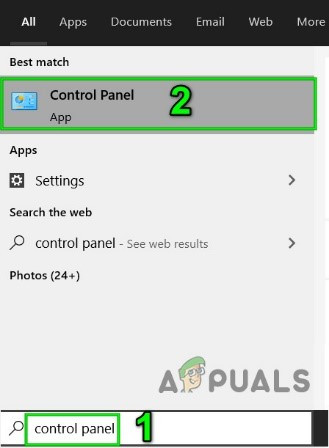
Open Control Panel - Click Programs.
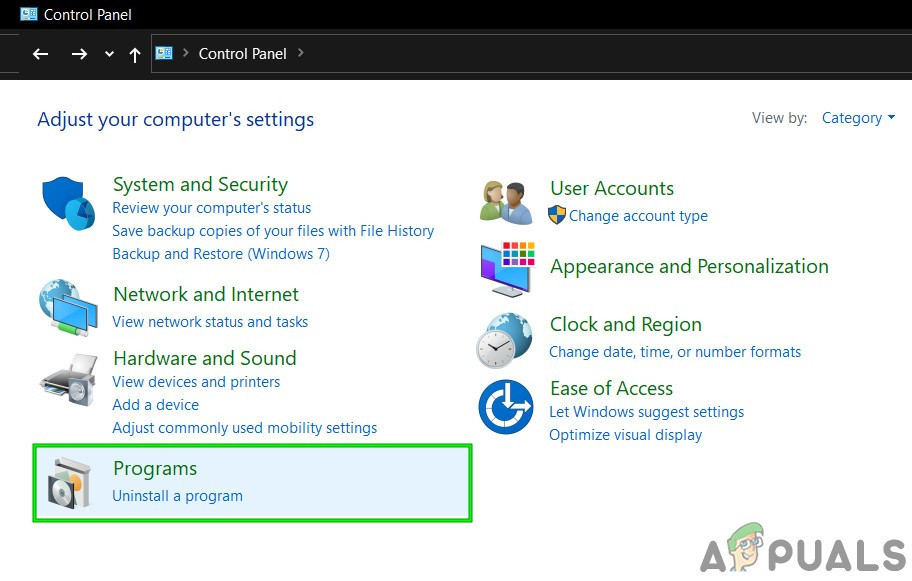
Open Programs in Control Panel - Now click on Programs and Features.

Open Programs and Features - Select the Office suite installation that the user wants to repair, then click on Change.
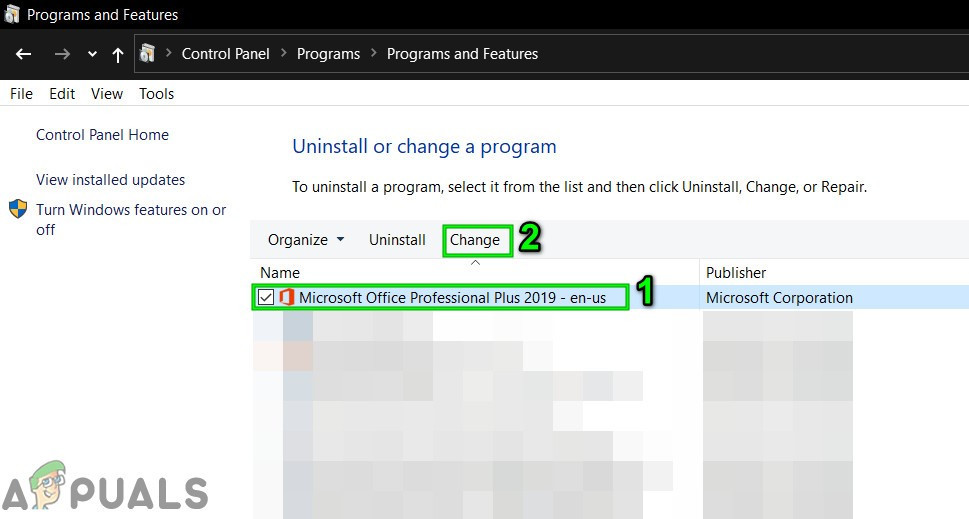
Repair Microsoft Installation - If UAC prompts, click yes.
- Then select Quick Repair.

Quick Repair Office Installation - Then click Repair.
- After completion of the repair process, restart your computer. And check if Outlook is functioning normally.
- If not, then repeat step-1 to step-5.
- Now choose the option Online Repair.

Online Repair Office Installation - Now click Repair.
- After completion of the repair process, restart your system.
- Launch Outlook and check if Outlook is functioning normally.
Note: This step will repair the complete Office suite installation. If a standalone version of Outlook is installed, then in the Programs and Features windows of control panel search for Outlook and repair it as mentioned above.
3: Update Outlook/Office
Microsoft releases frequent Outlook updates for improvement in features and to keep it bug-free. If you are holding back from updating your Outlook installation to the latest version, it is recommended that you update it to the latest version as soon as possible (if you are using Outlook in an organization, contact your IT staff).
- Launch Outlook and click on the File tab.
- Select the Office account option and click on the Update Options button.
- Now in the displayed list, click on the Update Now for updating Outlook to its latest build.
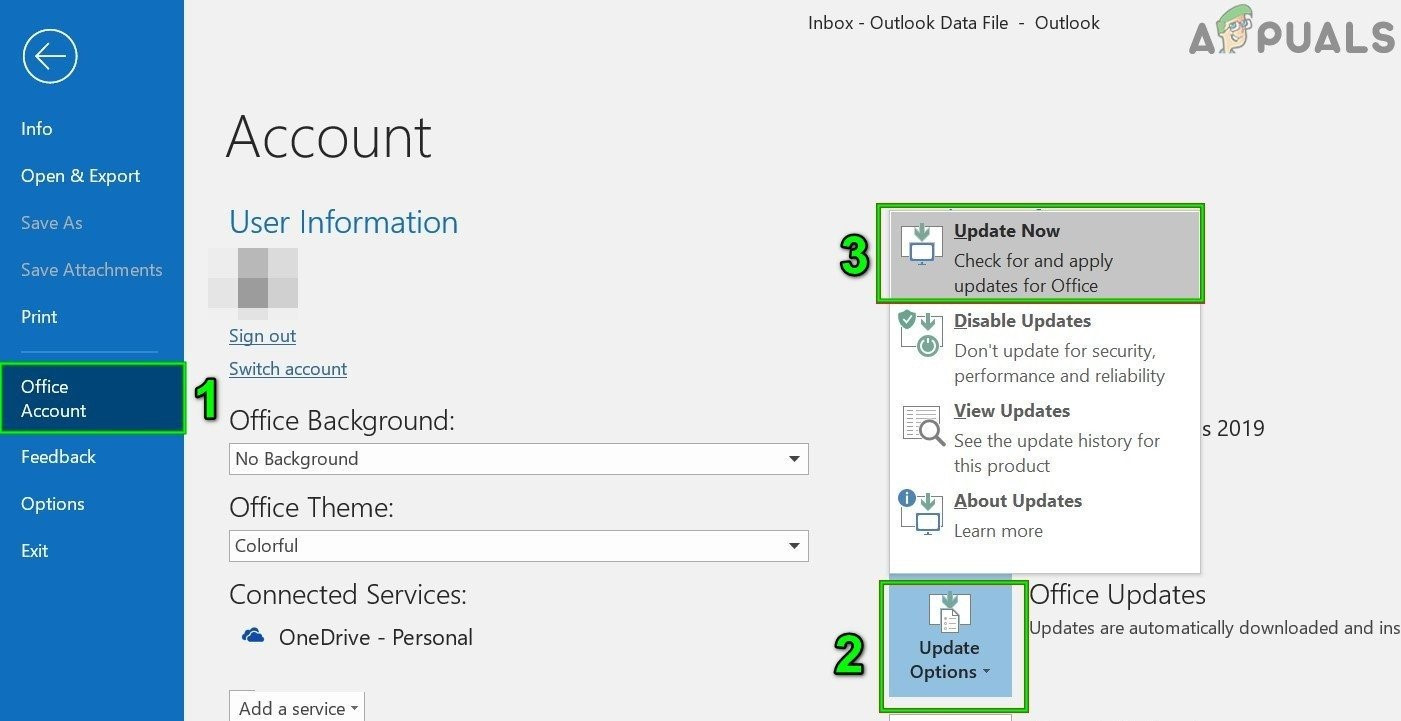
Update Outlook - After updating, restart Outlook and check if Outlook has started to function without any problems.
4: Uninstall Non-Compatible Office/Outlook Update
This error message can also occur due to non-compatibility between your Microsoft Exchange server installation and newly updated version of Outlook. In that case, reverting Outlook to an earlier version of Outlook may solve the problem.
- Click on the Windows key then in the search box type Control Panel and the results displayed click on Control Panel.
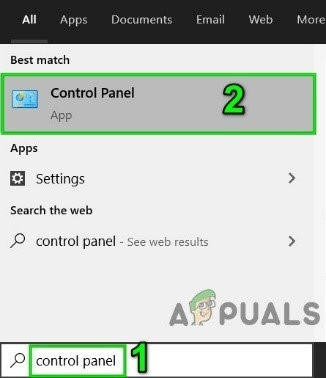
Open Control Panel - Click Programs.

Open Programs - Now click on Programs and Features.
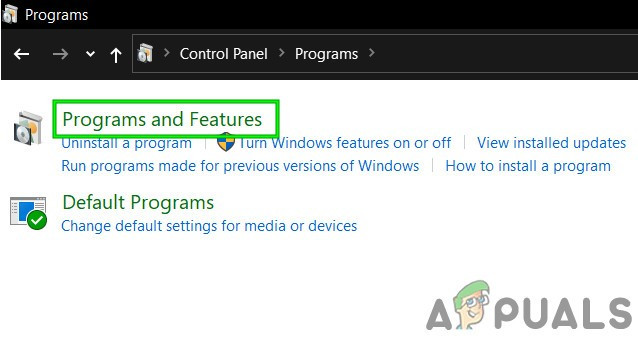
Open Programs and Features - Then click View Installed Updates.

View Installed Updates in Programs and Features - Then in the list of installed updates, locate and select the problematic update and then click on Uninstall.
- After completion of the uninstallation of Update, restart Outlook and check if Outlook is operating normally.
5: Delete the Old Outlook Profile and Create a New Outlook Profile
The error message ‘Administrator has made changes‘ in Outlook can be the result of a wrong configuration of the Outlook user profile or a corrupted Outlook user profile. In that case, deleting the current Outlook user profile and creating a new one may solve the problem. Remember that doing this will completely delete the user Outlook profile. Please strictly follow the steps in the order they are described.
- Exit Outlook.
- Click on the Windows key then in the search type Control Panel, in the list displayed click on Control Panel.

Open Control Panel - In the Control Panel, change View by from Category to Large.
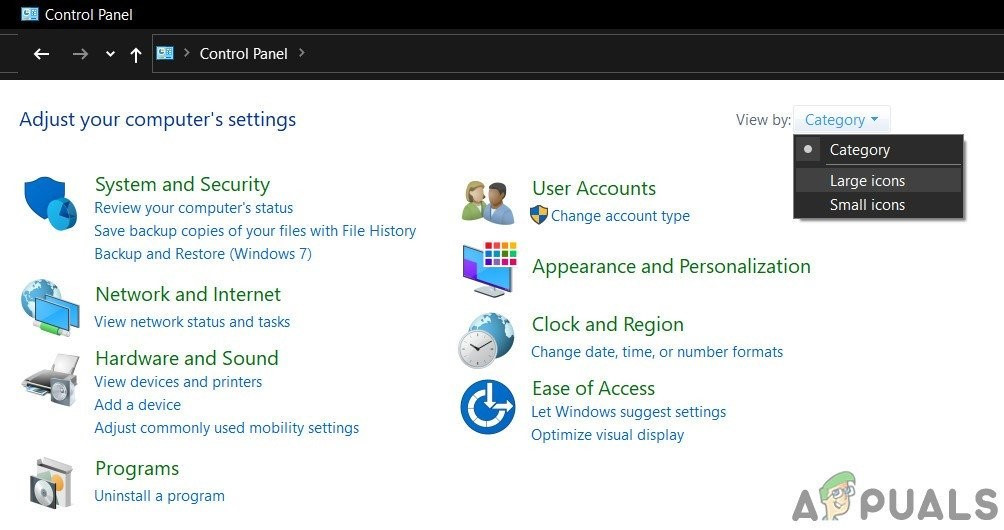
Change View By from Category to Large Icons - Now click on Mail.
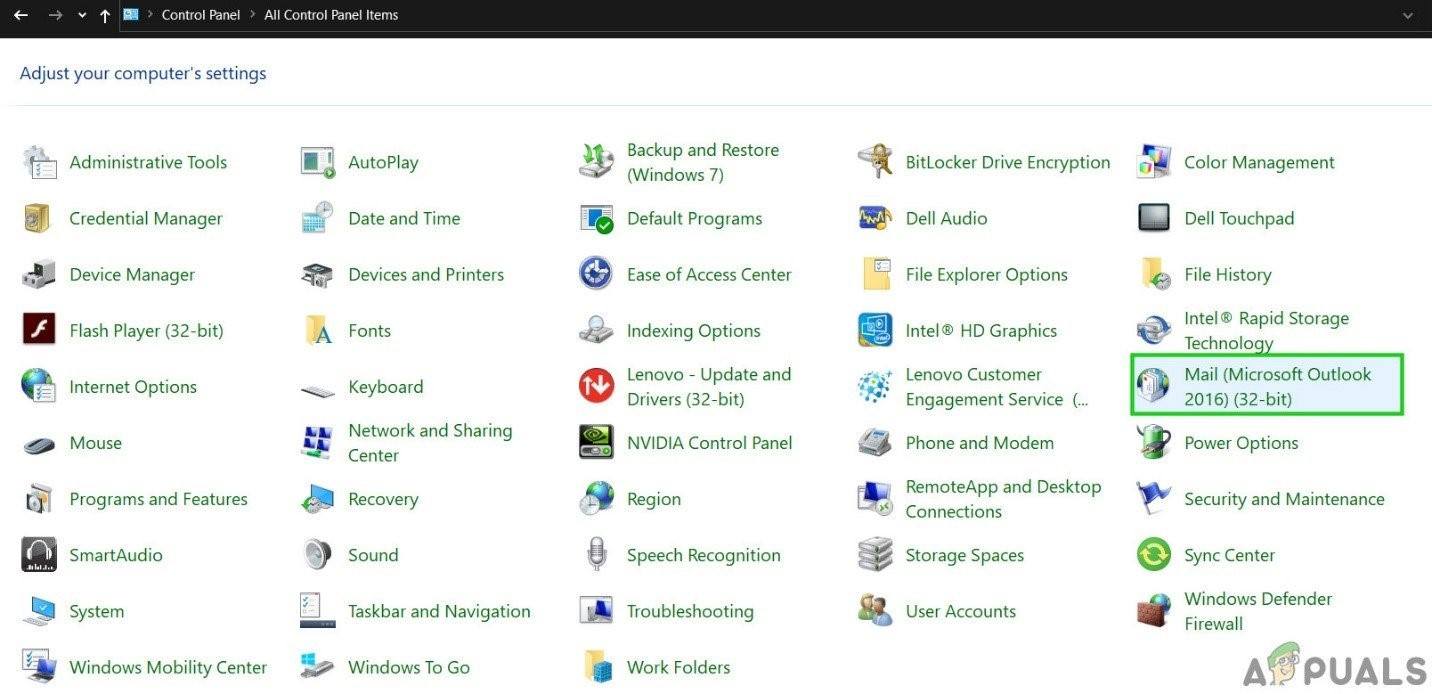
Open Mail in Control Panel - Then in the Mail Setup, click on Show Profiles.
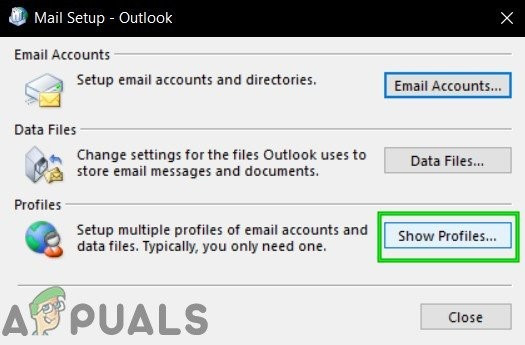
Show Profiles in Mail Setup - Now select the current Outlook profile and then click on Remove to delete the current profile.
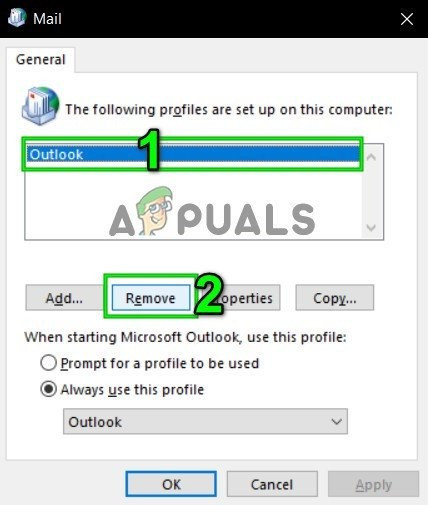
Remove Outlook Profile From Mail Setup - Now press the Windows key then in the search type “Registry Editor” and in the results list, right-click on Registry Editor and click on “Run as Administrator”.

Open Registry Editor as Administrator - In the registry editor, navigate to the following registry key as per your version of Outlook
- Outlook 2019, 2016 & 365:
HKEY_CURRENT_USER\Software\Microsoft\Office\16.0\Outlook\Profiles
- Outlook 2013:
HKEY_CURRENT_USER\Software\Microsoft\Office\15.0\Outlook\Profiles
- Outlook 2010 and older:
HKEY_CURRENT_USER\Software\Microsoft\Windows NT\CurrentVersion\Windows Messaging Subsystem
- Now in the Registry Editor, right-click on Profiles entry and then click Rename.
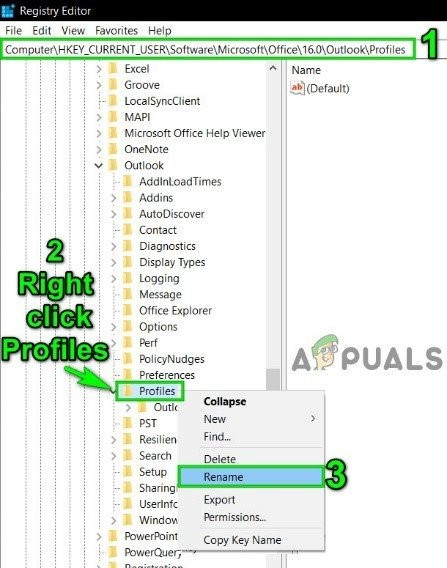
Rename Profiles in Registry Editor - Add Old at the end of Profiles to keep things in order i.e. PofilesOld.

Rename Profiles to ProfilesOLD in Registry Editor - Now close registry editor.
- Navigate to the following folder
c:\users\%username%\appdata\local\microsoft\
Now find Outlook folder and delete it.
- Navigate to the following folder
c:\users\%username%\appdata\roaming\microsoft\
Now find Outlook folder and delete it.
- Then add a new profile.
- Now repeat steps 1-5 to open Mail in Control Panel.
- Now in the Mail, select the newly created profile and select Always use this profile.
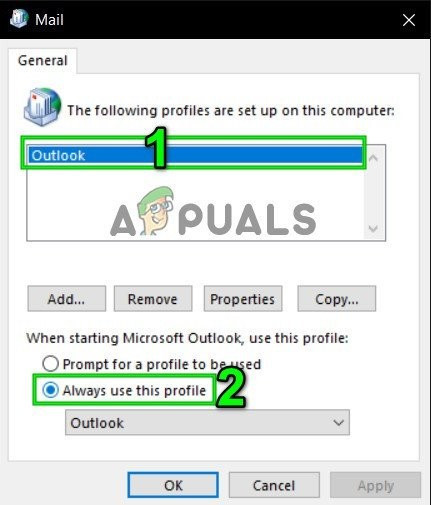
Enable Always Use This Profile - Now click on Apply and then on OK.
- Now Open Outlook and move to on the File tab.
- Now click on the Account Settings and in the list displayed, click on Account Settings.
- Then in the Email tab, select the Outlook account and then click on Change.
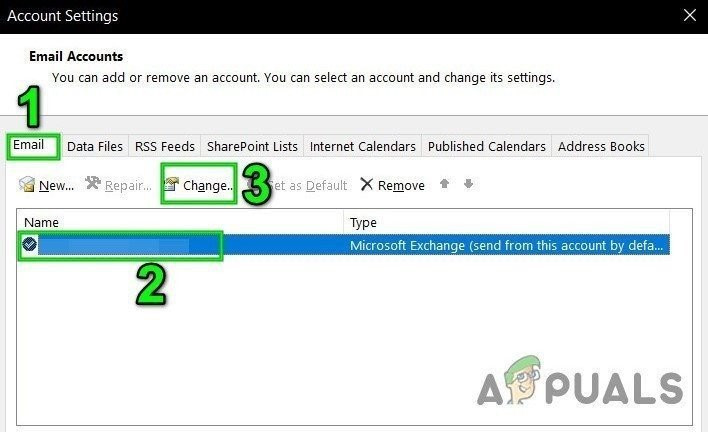
Change Email Account Settings - Now click on More Settings.

Open More Settings of Outlook - Now go to the Advanced tab and then Uncheck the checkbox of “Use Cached Exchange Mode”.
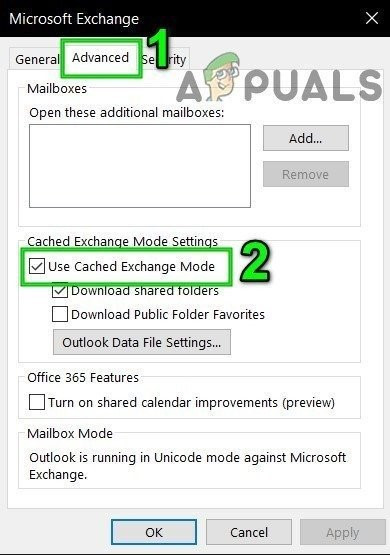
Unchecked Use Cached Exchange Mode - Click Apply and then click Ok.
- Now restart Outlook and check if Outlook is operating normally without any issue, then delete the renamed registry key.
6: Create the New Windows Local User Profile
If your local Windows profile is corrupt, then it can cause the Administrator has made changes error in Outlook. In that case, creating a new local user profile may solve the problem.
- Exit Outlook.
- Create a New Local User Profile.
- Now restart the system and log-in using the new local user profile.
- Launch Outlook and use the credentials that you were using before and check if it is working properly without any issues.




